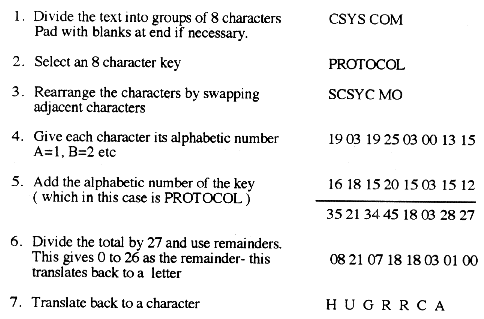

There are several standard encryption schemes in use today. One of the most widely used is called Data Encryption Standard (DES). DES, which is the official encryption technique used by the American government, uses a 64-bit binary number as an electronic "key". The data to be sent is mathematically scrambled with the key, effectively producing an electronic "lock" with 72 quadrillion possible combinations. As secure as this sounds, there are two major problems with DES.
The DES algorithm is quite complex and working through an example would be quite tedious. However, a similar but less complex algorithm can illustrate the mechanics of DES.
Here is an example coding the first eight characters of the phrase CSYS COMMUNICATIONS using the key protocol.

Note that unlike anagrams, the same letter - "C" or "S" in this case - can have a different letter in cypher text.